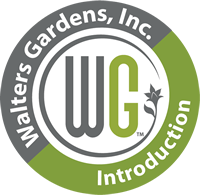Monarda didyma 'Pardon My Purple' PP22170 CPBR5101
Pardon My Series


Common Name: Bee Balm
No room for the tall, bushy, traditional Bee Balm in your garden? Now there’s a petite selection that’s easy to tuck into the front of your sunny border and combination containers. Reaching just a foot tall at maturity, this compact selection forms a well-branched clump of deep green, glossy foliage.
From mid through late summer, fuchsia purple flowers sit just at the top of the foliage. Though the plant may be dwarf, the flowers are the same size as taller selections, measuring a full 2½-3" across. They add a cool splash of color to the border in high summer.
This new selection also offers good resistance to powdery mildew, a problem with many older Bee Balms. Just provide good air circulation, sunshine, and plenty of water and these plants will thrive!
Monarda is native to eastern North America, so it is easy to grow and it multiplies quickly. The flowers' sweet nectar attracts scores of hummingbirds, butterflies, and bees to the garden. The aromatic foliage smells like mint when crushed and is often used to flavor teas.
128ct Plug Tray |
20ct Plug Tray |
72ct Plug Tray |














